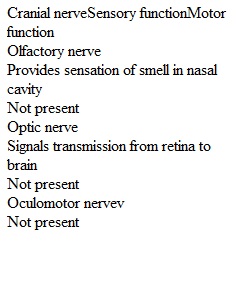


Q 1. 2. . 1. Apply information from Module 7- The Brain & Cranial Nerves. Complete the chart by providing the name of the cranial nerve, sensory function, and/or motor function. 2. Create a short story (2-3 paragraphs) incorporating all of the cranial nerves.Difference in oyster hatch and farm.
View Related Questions